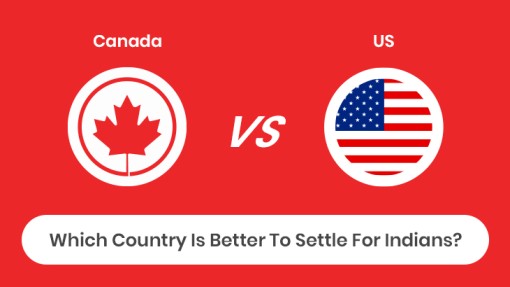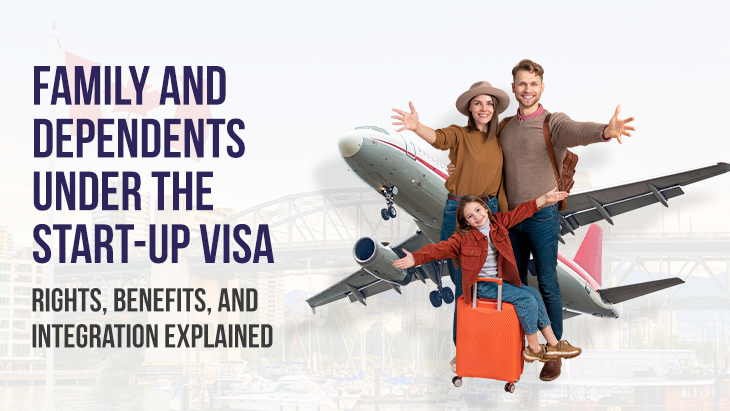This question is part of an age-old debate between the two largest nations of North America. The societies of both Canada and the United States hold the view that their own country is the better place to live. Very few of us know exactly what both these nations offer to immigrants.
Canada And US
The US and Canada are two countries in North America with many similarities and quite a few critical differences. While the United States is much larger than its northern neighbour in terms of GDP, the average income per capita is similar in both places.
People generally pay more in taxes in the United States, and Canada offers superior social benefits. The cost of attending a university and expenses for healthcare are typically less in Canada.
Here Is a Clear Comparison Between Both Nations
Economics
Canada's 2019 gross domestic product (GDP) was $1.73 trillion, while the United States reported a GDP of $21.4 trillion. While the U.S. is a much larger superpower in terms of the economy, citizens' incomes are much more closely aligned.
The U.S. Census Bureau reports the median income for U.S. families at $68,703 In Canada, the median income for 2019 was $62,900.Taxes can also be a key differentiator for the two countries. While U.S. federal income tax brackets span from 10% to 37% for individuals, in Canada, tax rates are between 15% and 33%.
However, in the U.S., singles making over $40,526 annually pay 22% in taxes, whereas Canadian singles making less than $49,020 only have to pay 15% in taxes. According to the website numbeo.com, the cost of living is higher for Americans than Canadians.
The Cost of Living Index estimate states that consumer prices in Toronto are about 24.05% lower than in New York City, and Toronto's rent price is approximately half the price of renting an apartment in New York. This Index looks at rent, groceries, restaurant prices, and local purchasing, which collectively are higher in the United States ($ in USD).
Family-Based Provisions
Spending time with children represents the enormous financial needs of parents.
Canada - Canada has mandated leave and benefits.The government supports this through provincial employment insurance. The program includes both mothers and fathers. Benefits paid could be up to $595 per week.
US - The United States is less progressive in this area. The US offers some support under the Family and Medical Leave Act (FMLA). FMLA can allow for 12 weeks of unpaid leave. Individual states also have their laws.
Healthcare
The United States has the highest healthcare costs in the world. Per capita, individuals can expect to pay approximately $11,172 annually. This compares to an annual average of $7,064 for Canadians.
Climate and Culture
The United States and Canada are large countries from the Pacific Ocean to the Atlantic Ocean coasts, meaning their climate and culture vary significantly by state or province. The United States is more densely populated and warmer than Canada, being nearer to the equator.
Education
University can be another significant expense in a person's life, putting many students in debt. The United States tops the list for countries with the most expensive university costs, with Canada coming in fourth. The average annual tuition at a ranked, in-state public college in the US is estimated at $9,687, while the average yearly tuition at a private college is $35,087.
According to the National Center for Education Statistics, undergraduate tuition, fees, room, and board were estimated to be $17,797 at public institutions, $46,014 at private nonprofit institutions, and $26,261 at private for-profit institutions.
In Canada, the average annual tuition at a public college in 2020-2021 was 6,580 Canadian dollars. Montreal is the largest city in Quebec, Canada, where many residents are bilingual, speaking both French and English. In fact, according to Census Canada 2016, 20% of Canadians claim French as their native language.
Cost of Living, Which Is Cheaper to Live?
Overall, living in a metropolitan city in Canada is cheaper than in the United States. Of course, this depends on the city you are looking at and your income tax bracket.
Express Entry is Fast
Canada’s Express Entry system is fast. After submitting a final application for permanent residence, the vast majority of applications are processed in less than six months. With Express Entry, one can include their spouse, common-law partner, and dependent children.
An experienced Canada Immigration Consultant can help applicants with visas and other procedures. The visa process and application are more likely to be done fast-tracked. Their goal is to approve successful applicants within weeks.
Express Entry has a few distinct advantages over the US immigration system, especially for Indians. Now that you understand the basics of Express Entry let’s compare a few elements of the US system.
While Express Entry allows skilled workers to apply directly for permanent resident status, the United States system is designed so that foreign workers initially arrive on temporary work visas. After gaining work experience and employer sponsorship, a foreign worker in the United States may eventually transition to permanent resident status, but this process takes years. Any issue with an employer or a visa renewal can cause enormous problems for your US Green Card.
Express Entry provides a much more efficient and stable process for skilled workers looking to become permanent residents.
Immigration and Job Offer
If the applicant hopes to immigrate to the US as a foreign worker, they almost definitely require a job offer to succeed. Traditionally, most Indian workers in the US begin their journey by obtaining an H-1B visa. This work visa allows you to work for a specific employer in the US.
If they decide to stay permanently and pursue a Green Card, they will likely need an employer to sponsor their Green Card application. Most immigration journey in the United States is tied directly to the employer.
Meanwhile, as outlined above, the Canadian Express Entry system does not require a job offer.
One can apply for Canadian permanent residence without ever working for an employer in Canada. That being said, obtaining a job offer in Canada and gaining Canadian work experience can significantly increase your competitiveness under the Express Entry system.
The US does allow certain workers to apply for work visas without a job offer. For example, this can be done through the O-Visa program, but only for individuals who can demonstrate “extraordinary ability or achievement” in the arts, sciences, education, business, or athletics.
Express Entry vs H-1B Visa
The US visa category H-4 enables the spouses of certain H-1B visa holders to obtain work authorization while they are employed in the US. However, the Trump Administration has been threatening to dismantle this visa category. There is no guarantee that the potential for spousal employment will continue beyond the short term.
Canada’s Express Entry immigration system has a distinct advantage over the US regarding family, as Express Entry allows applicants to include accompanying family members. If an Express Entry application is approved, all accompanying family members receive Canadian permanent resident status and the right to work for any employer in Canada.
Permanent residents can become eligible for Canadian citizenship, including the right to apply for a Canadian passport, one of the most valuable passports in the world – just three years after obtaining permanent status. This is quicker than in the US, where the path to citizenship is often measured in decades rather than years.
The increase in H-1B visa refusals has impacted not only those who applied for their first H-1B visa but also H-1B holders who applied to extend their status in the United States. If individuals want to bring their spouse or partner to the US while working on their H-1B visa, they may experience some challenges, especially if their spouse or partner wants the ability to work while they’re in the US.
Canada Study Visa Process
The Canada study visa takes around 20 working days to get approved. Documents and financial proof are essential for a Canadian study permit. It is advisable to go through the Canadian consulate website and apply for a student visa. The students must have all the documents like a letter of acceptance from a designated learning institution, passport, funding proof, transcripts, and certificates.
USA Study Visa Process
An F1 student visa is essential for Indian students applying to American universities. The F1 USA study visa's validity is based on the course's duration. To get an F1 visa, Indian students must fulfil the academic, financial, documentation, and institution criteria. F1 access will be granted only when students receive an invitation for admission from the respective educational institution.
The F1 visa process has the following steps:
1. Get accepted by a SEVP-certified institution
2. Upon acceptance, you will get an I-20 form through which you need to apply for an F1 visa
3. Pay the visa application fee
4. Complete your DS-160 visa application
5. Choose your visa interview date and time
6. An F1 visa interview is an important criterion for getting visa approval
Post-study Work Permit in USA and Canada
The post-study work permit is one of the reasons that makes the topic of America vs Canada popular for abroad education. Canada and the USA offer numerous lucrative opportunities and enormous growth.
However, both countries have their work permit norms and guidelines. It is an essential factor of comparison between the USA and Canada by the Indian students.
USA vs Canada job opportunities
Canada and the USA are recognized as significant economies of the world. The job market is robust and promising enough for Indian students to settle down and earn a living. However, the job markets of both countries are differentiated based on degrees, courses, and specializations.
Jobs in finance, engineering, management, medical, dentistry, media, and nursing are offered the best salaries in the USA. The scope of these specializations and skills are immense, and they receive the highest pay packages. A student, on average, earns INR 35,70,506 annually in America.
On the other hand, the employment opportunities in Canada are more promising in areas like program analyst, financial manager, hotel management, civil engineering, data science, nursing, and teaching. New graduates in Canada earn around INR 27,37,016 per year.
The United States is a more prominent global superpower; Americans can expect to pay more in nearly every aspect of living. People in the US and Canada generally have similar annual incomes. However, taxes are reportedly lower in the US, offering Americans a slight take-home pay advantage.
In social benefits, Canadians have a more robust government-mandated family program with more significant government funding for maternity leave through employment insurance programs. Canadians can also expect to pay less for healthcare costs.
Furthermore, educational university costs are also lower (on average) in Canada, which could be a final factor that tempts many citizens across the border when considering long-term family planning.














Post Comments